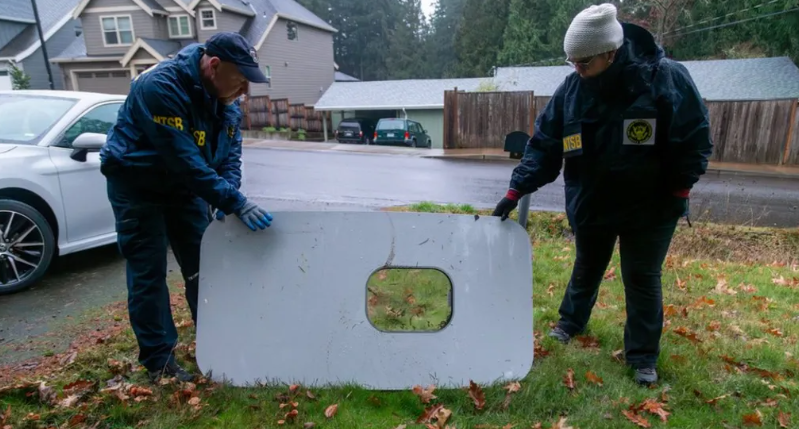The FBI has initiated a criminal investigation into a January Alaska Airlines flight, during which a door plug on the Boeing 737 Max 9 aircraft blew out mid-air.
Confirming the criminal probe, the FBI sent letters to passengers aboard the flight, categorizing them as “victims.”
While none of the 177 passengers and crew on board were fatally injured, some sustained injuries. Subsequently, a group has filed a lawsuit against Alaska Airlines, citing “serious emotional distress, fear, and anxiety.”
Letters sent by the FBI to passengers on March 19, signed by a victim specialist within the FBI’s Seattle Division, indicated that the criminal investigation could be lengthy, with updates on its progress unavailable at the moment.
These letters substantiate earlier reports suggesting that the Department of Justice (DOJ) had launched a criminal investigation into the Boeing jetliner blowout, which occurred during a January 5 flight from Portland, Oregon, to Ontario, California.
Sources familiar with the investigation disclosed to the media in early March that the probe would examine whether Boeing had violated a 2021 agreement with the Justice Department, following two fatal crashes involving its 737 Max aircraft in 2018 and 2019.
Boeing has refrained from commenting on the ongoing criminal probe. Alaska Airlines, in a statement issued to the media following reports of the DOJ investigation, asserted that a federal probe was customary in such incidents. The airline stated its full cooperation and expressed confidence that it was not a target of the investigation.
The Alaska Airlines flight in question was compelled to make an emergency landing in Portland after a section of the plane’s exterior dislodged shortly after takeoff. This loss caused an uncontrolled decompression inside the aircraft, with passengers recounting the harrowing experience of having to “hold on for dear life.”
One passenger, Cuong Tran, recounted how his seatbelt saved him as various personal items were torn away from him 16,000 feet above ground. Tran, seated near the section that blew out, sustained injuries, including a leg laceration.
Images shared online and later by the US National Transportation Safety Board (NTSB) depicted a substantial hole in the side of the Boeing 737-9 Max aircraft, with oxygen masks dangling from the ceiling. The missing section of the plane was later recovered from a Portland school teacher’s backyard.
In a preliminary investigation, US regulators discovered that four critical bolts, intended to secure the door plug, were missing from the flight.
Additionally, Boeing had imposed restrictions on the aircraft days before the incident, prohibiting long-haul flights over water, following reports of pressurization warning lights during three prior flights made by that specific plane.
According to NTSB chief Jennifer Homendy, these restrictions were imposed to ensure the plane could promptly return to an airport if the warnings recurred.

